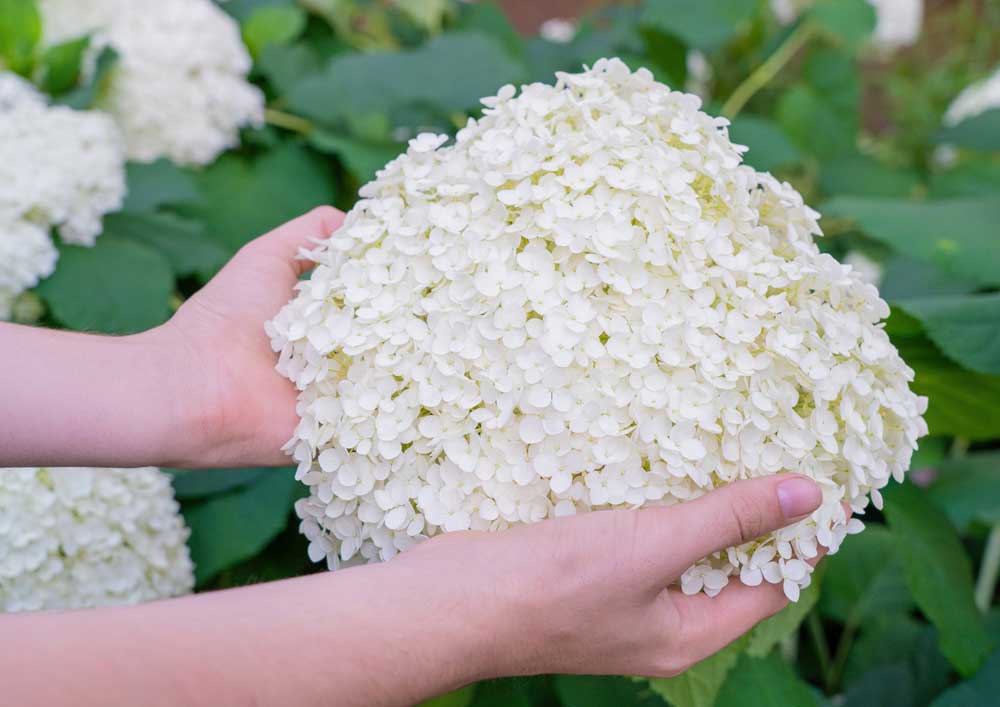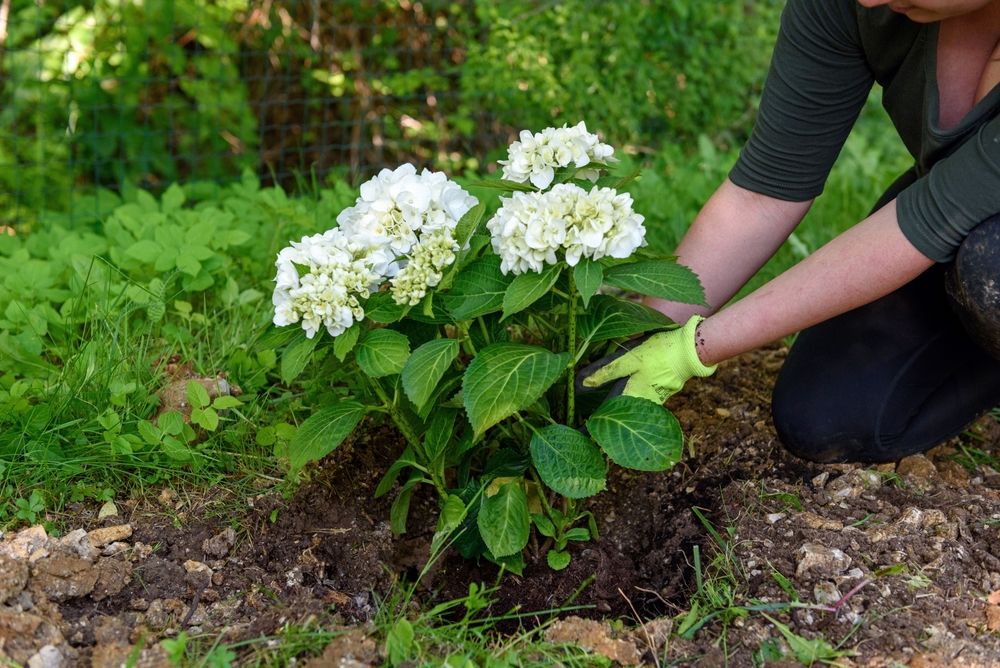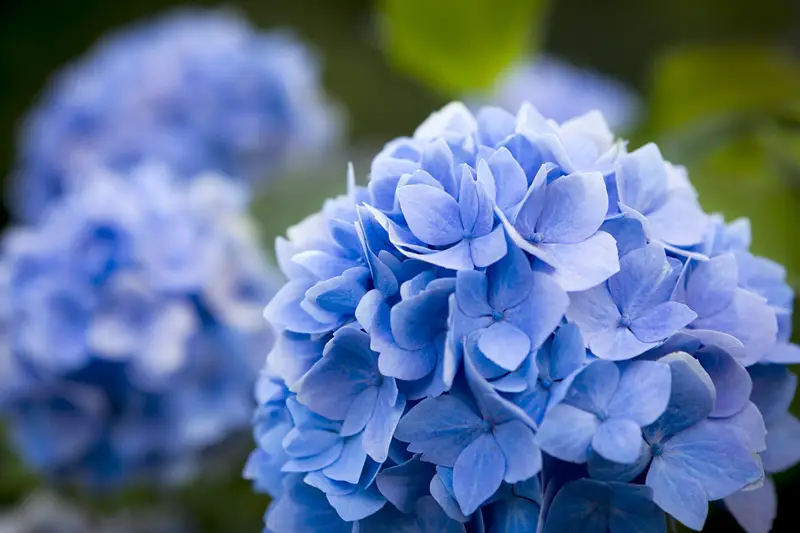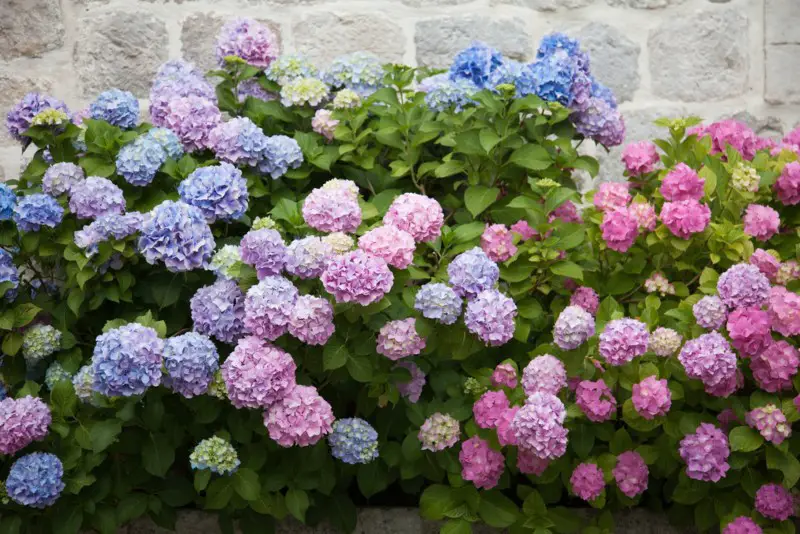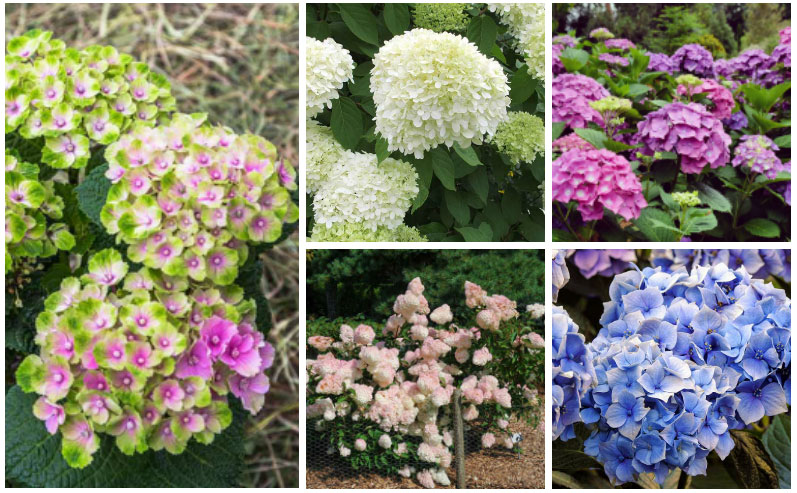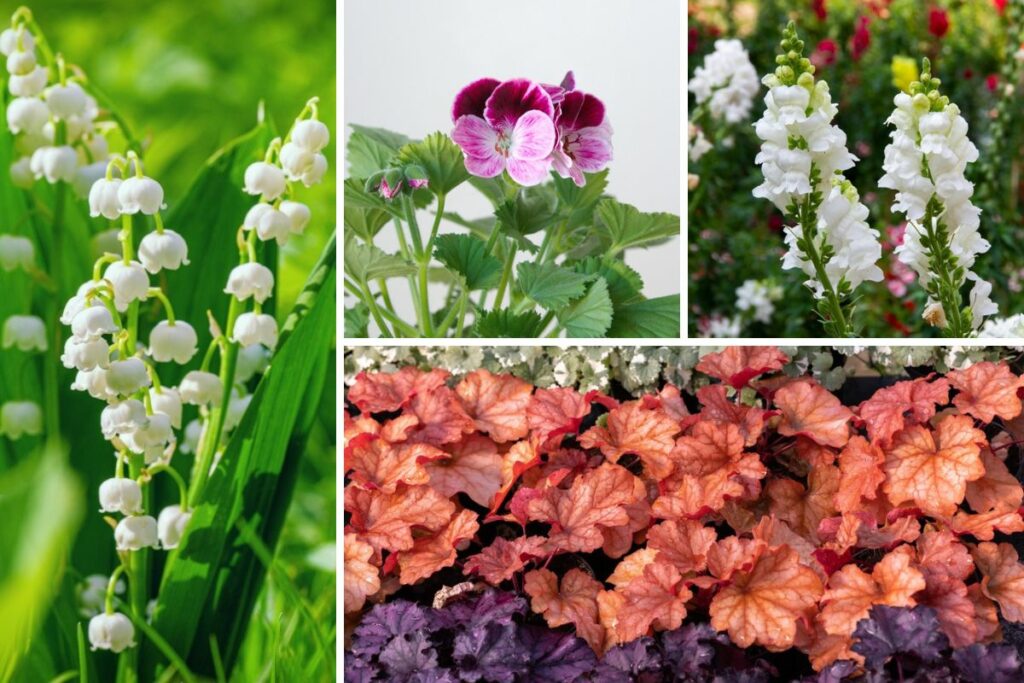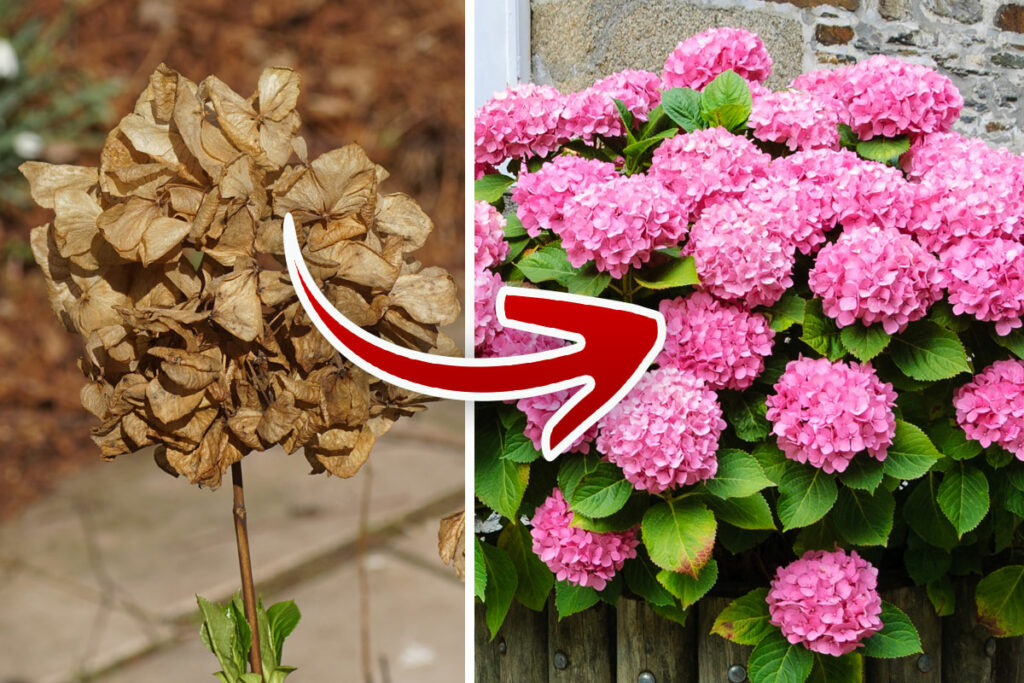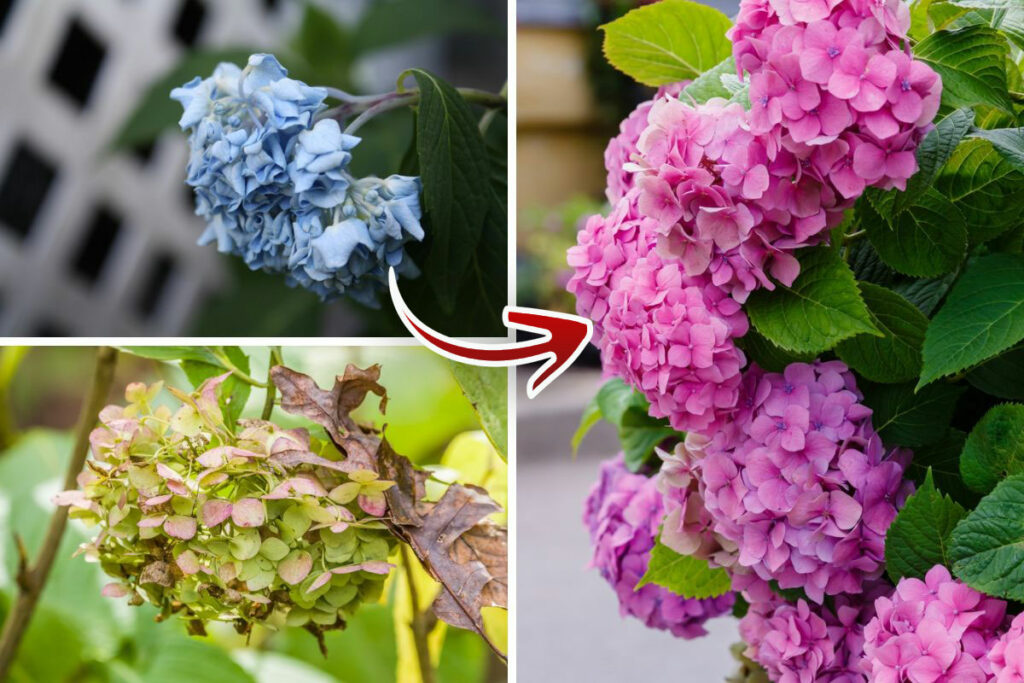
Hydrangeas are beautiful garden plants popular for their vibrant hues and pom-pom-like flowerheads.
These plants, however, are susceptible to environmental conditions and various diseases that cause them to wilt or alter their appearance.
Thankfully, you came to the right place. Here, we listed the 10 common problems with hydrangea plants as well as their corresponding solutions and preventive measures.
1. Wilting or Drooping Flowers
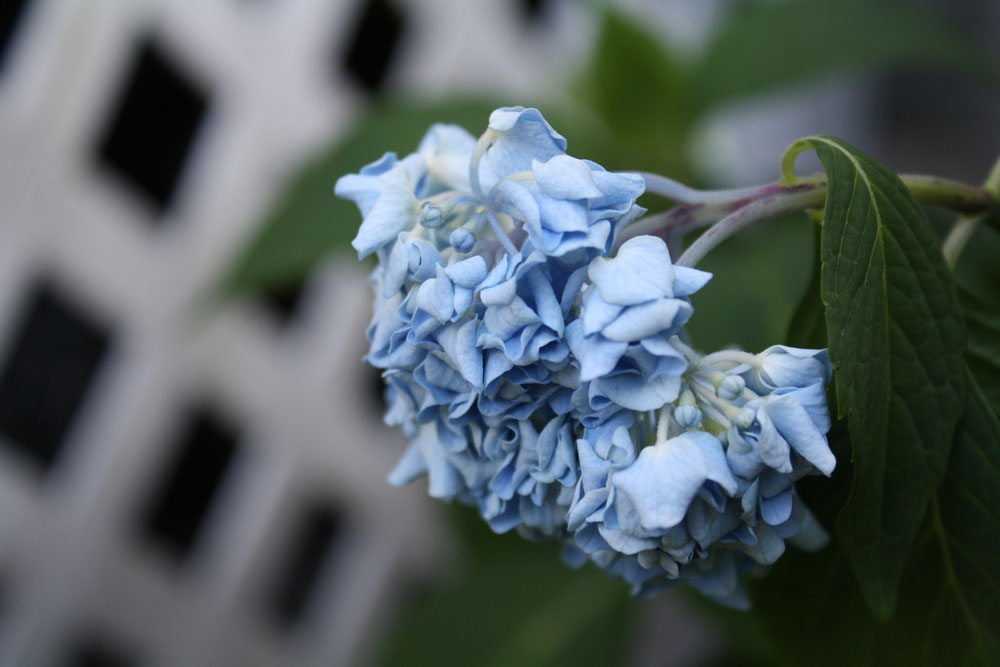
When your hydrangeas are exposed to excess sunlight and not getting enough water, their flowers will look dry and brown, and their foliage will start to fall off.
Solution:
To revive wilting hydrangeas, cut off dead flowers or leaves and consider planting them in moist, well-draining soil with compost.
After that, water your hydrangeas deeply for several minutes, and check the moisture level of the soil day-to-day.
Meanwhile, place your hydrangeas in a partly shady area where they can get enough morning sun but not too much afternoon sun.
Subsequently, give your hydrangeas at least 3–6 hours of full sunlight daily. At the same time, water them regularly for not more than thrice a week.
2. Color of the Flower Turns Faint
While the fading of your hydrangea’s colors can be due to natural processes, there are other reasons why this occurs:
- Not enough water
- Prolonged exposure to harsh sunlight
- Poor nutrition
- Soil pH is too acidic or alkaline
Solution:
Ensure that the soil pH is maintained at 5.2 to 5.5. This pH level allows your hydrangea to absorb nutrients better.
In the case of Hydrangea macrophylla, however, you may adjust the soil pH according to the color that you want to achieve.
Consequently, a low phosphorus fertilizer benefits blue hydrangeas, while organic, general fertilizers are substantial for other variants.
3. Not Producing Flowers
Most hydrangeas typically start to produce flowers in spring or early summer. However, there are instances where your hydrangeas appear lush but refuse to produce flowers.
Solution:
Too much nitrogen in the soil and careless pruning are the major causes of this problem. So to fix that, avoid using high nitrogen fertilizers and shift to fertilizers with high phosphorus.
On the other hand, pruning methods aren’t universal for all hydrangeas, so properly identify your hydrangea before pruning them (whether their flowers bud on new or old wood).
4. Weak or Drooping Leaves or Stems
Stems, in particular, may sometimes droop when the flowers become too big or heavy to accommodate. In the same manner, wilting weakens both stems and leaves.
Solution:
In addition to meeting all nutritional and environmental requirements, don’t over fertilize. Avoid high-nitrogen fertilizers and opt for those that contain enough phosphorus and potassium.
You may support the stems by tying them to a wooden post. However, cutting off some flowers for decoration is also a good idea.
Furthermore, you may choose to trim off some flowers to allow your stems to accommodate their weight.
Lastly, don’t forget to water your hydrangeas regularly, especially during the hot season.
5. Browning Leaves
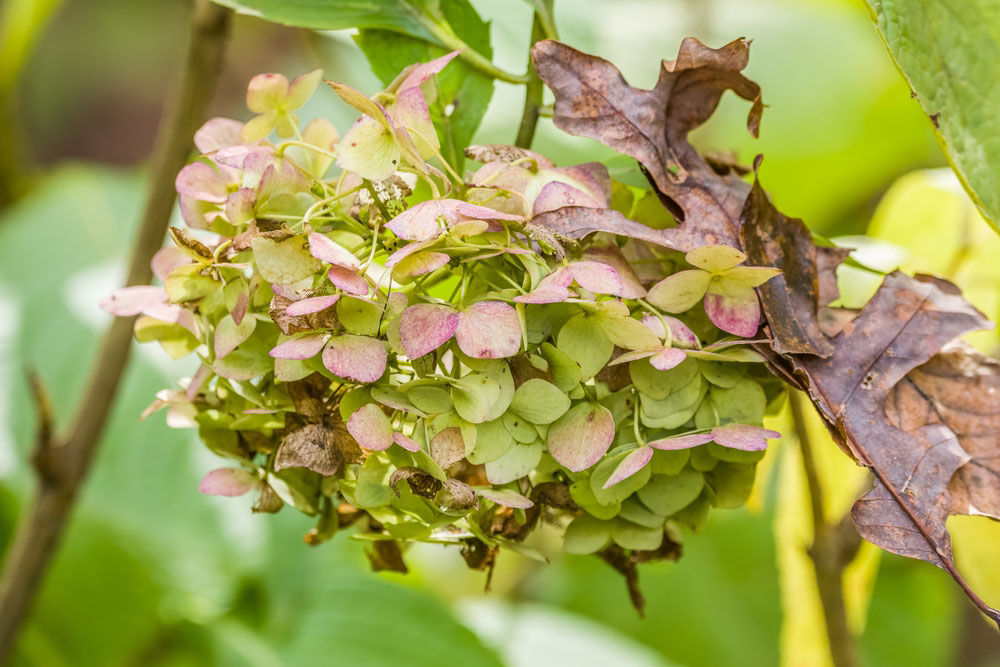
Sometimes, the edges of your hydrangea leaves turn brown or appear wilting. Read below to know the solution to this problem.
Solution:
Browning of hydrangea leaves is typically caused by overhead watering or too much wind exposure. Excess sunlight and planting hydrangeas in small pots are possible reasons too.
To solve this problem, water the soil directly and let the water soak. To add, consider transferring your hydrangeas on the ground once they become too big for pots.
Lastly, keep your hydrangeas from areas exposed to harsh winds that steal away moisture, or add mulch to the soil.
6. Bacterial Leaf Spots
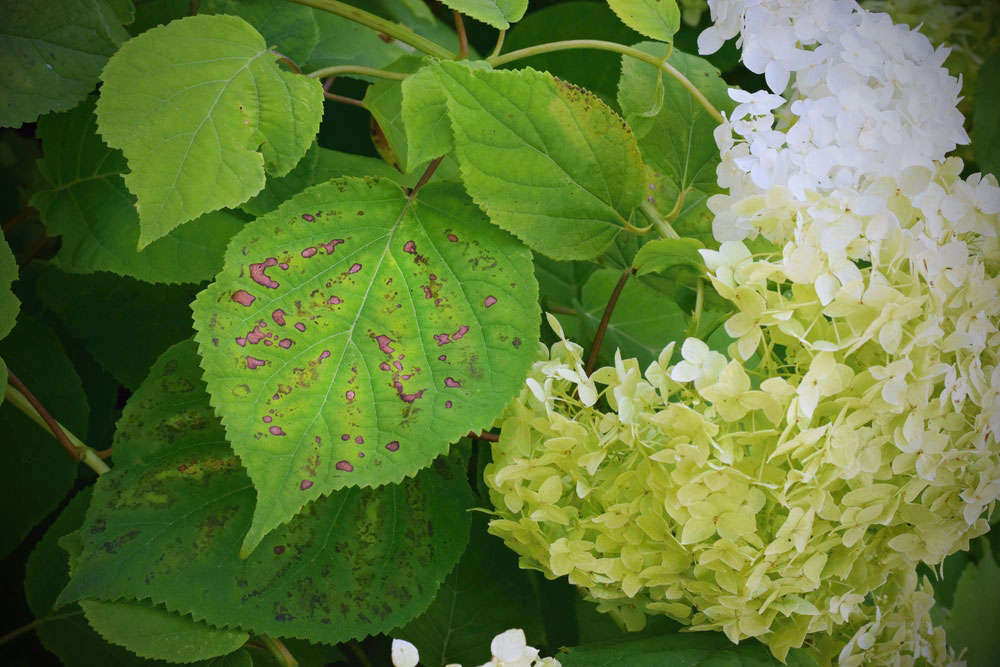
Are there plenty of water-soaked or reddish-purple spots on the leaves of your hydrangeas? These spots could be due to a bacterial disease that affects hydrangeas after heavy rains.
Solution:
Bacteria enters the plant system through wounds in the leaves or other natural openings.
To solve bacterial leaf spots, first remove the infected leaves. After removing affected leaves, spray copper-based fungicides.
At the same time, avoid overhead watering or wetting your plant’s leaves as this practice further aggravates the problem.
7. Fungal Leaf Spots
Fungal leaf spots appear brownish with a tan-colored center, although some lesions appear red to brown.
Solution:
Spraying your plants with fungicide is the fastest antidote that’ll limit the spread of these hideous spots.
Moreover, make sure to cut off all infected leaves. Sometimes, you’ll have to isolate your hydrangea from other plants and replant it in a brand new pot.
Apart from this, avoid using sprays or sprinkles to water your hydrangeas.
8. Powdery Mildew
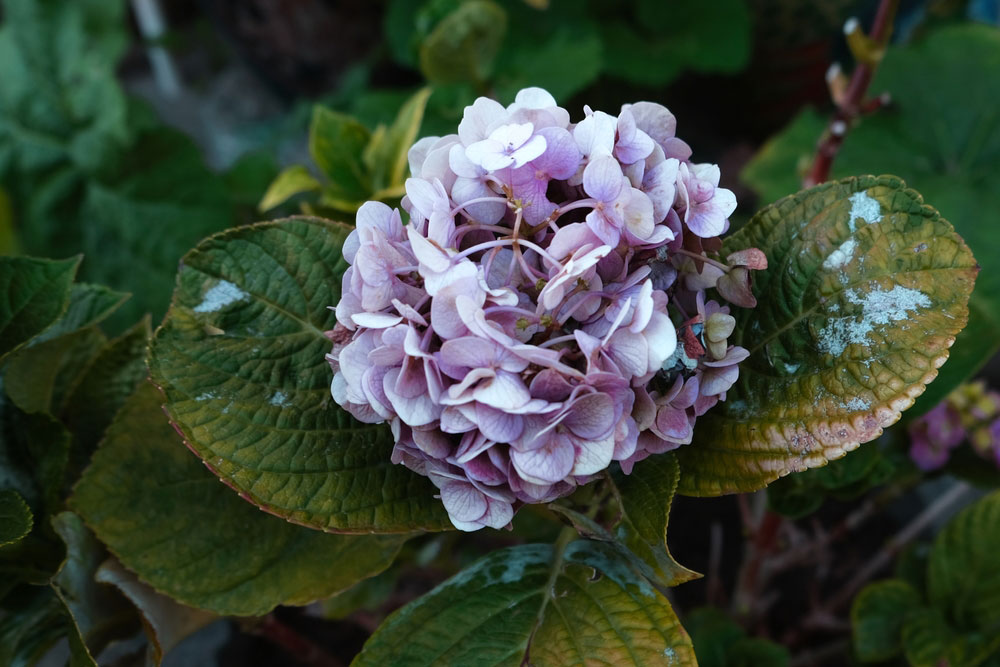
Powdery mildew appears as white, powder-like growth on your hydrangeas’ leaves. Aside from its unsettling appearance, powdery mildew causes your leaves to distort.
Solution:
Powdery mildew is caused by fungal spores that spread through the air. This condition affects hydrangeas kept in congested areas with increased humidity.
You may use neem or horticultural oils to get rid of powdery mildew. Interestingly, you can make a homemade treatment by combining three drops of dish soap and half a tablespoon of baking soda in two liters of water.
9. Discoloration of Leaves
When your leaves appear yellowish to orange, especially around the edges, this condition may be due to nitrogen or iron deficiency.
Solution:
Iron is an essential mineral that plants need to complete natural processes like chlorophyll formation. When your hydrangea isn’t getting enough iron, your leaves will have yellow edges.
To solve mineral deficiency, use fertilizers with additional iron content.
Aside from mineral deficiency, dehydration and inadequate sun exposure may also be the cause of discoloration in hydrangea leaves. That’s why, keep your plants hydrated and give them enough morning sunlight.
10. Holes on Leaves
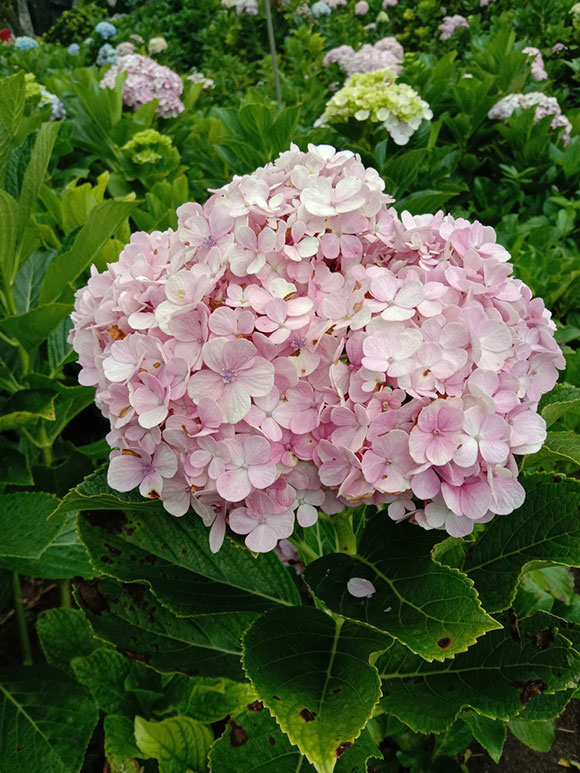
These holes are caused by creepy crawlies like beetles, slugs, green bugs, and caterpillars.
Solution:
Slugs, in particular, love attacking young hydrangeas. Fruit worms, on the other hand, feed on mature hydrangea leaves.
To get rid of slugs, you may need to remove mulch from your plant as they attract them. To keep them away, you may also create a barrier with sharp sand around your hydrangeas.
At the same time, biological insecticides or insecticide soaps help eliminate bugs and caterpillars.





